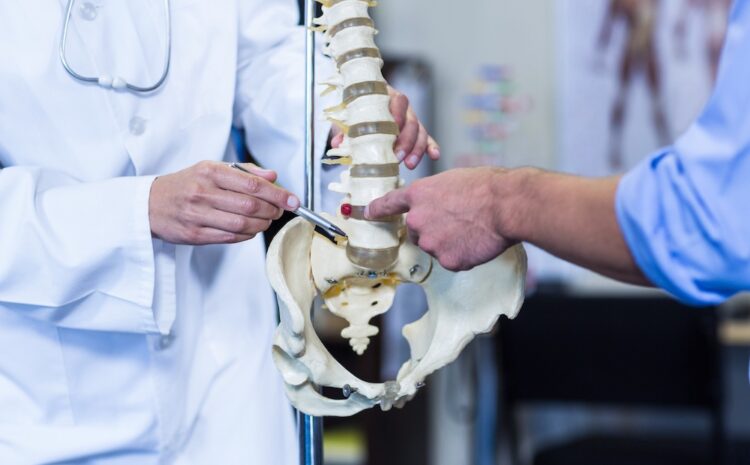
A spinal cord injury is a condition characterized by damage to the spinal cord. It temporarily or permanently alters the spinal cord’s normal motor, sensory, or autonomic function.
The cervical, thoracic, and lumbar segments make up the spinal cord. Each section protects distinct clusters of nerves that regulate the body’s functions. The nature and severity of spinal cord injuries vary depending on which spine segment is injured.
- The cervical spine comprises seven cervical vertebrae and is the upper portion of the spine. Head and neck injuries are caused by cervical spine trauma. The thoracic spine comprises the upper and central back region. Injuries to the thoracic spine impact the upper chest, mid-back, and abdominal muscles.
- The lumbar spine is the most significant portion of the spinal cord, located at the base of the spine. The lumbar spine transports the most weight compared to the other spinal segments. Lumbar spine injuries impact hips and legs.
A complete spinal cord injury results in irreversible damage to the afflicted portion of the spinal cord. Complete injuries to the spinal cord result in paralysis of the legs and lower body (paraplegia) or paralysis of all four extremities and the torso (quadriplegia).
An incomplete spinal cord injury refers to an incomplete spinal cord impairment. The capacity to move and the level of sensation depend on the spine’s injured region and the injury’s severity. The patient’s health and medical history can also impact the outcome.
If you have sustained a spinal cord injury due to an accident, you require the services of an experienced spine injury lawyer in Austin. The Law Office of Mathew Shrum has represented clients with Austin personal injury cases who, like you, needed to figure out where to turn. Contact us at (512) 777-0000 for a free consultation.
What are the Signs and Symptoms of a Spinal Cord Injury?
Any spinal cord injury may cause one or more of the following signs and symptoms:
- Lack of motion.
- A sensation that has been altered or lost includes the ability to perceive heat, cold, and contact.
- Loss of control over the bowels or bladder.
- Reflex activities or spasms that are exaggerated
- Alterations in sexual function, sexual responsiveness, and fertility
- Pain or an intense tingling sensation brought on by damaged nerve fibers in the spinal cord
- Difficulty inhaling, coughing, or clearing the airways of secretions.
- Extreme back discomfort or pressure in the neck, head, or back.
- Weakness, incoordination, or paralysis in any body part.
- Numbness, tingling, or loss of feeling in the hands, fingers, feet, and limbs
- Loss of control over the genitourinary or gastrointestinal tract.
- Difficulties with balance and walking.
- Impaired respiration after trauma.
- A twisted or abnormally positioned neck or spine.
What to do if a Spinal Cord Injury is Suspected
Immediately seek medical attention if you incur a head or neck injury or suspect a spinal cord injury.
- Call 911.
- Refrain from moving, as permanent paralysis and other severe complications could follow.
- Stay still.
Others can provide simple first aid without moving the head or neck by placing heavy towels on both sides of the neck. If you or a loved one have been injured, it is crucial to seek medical attention immediately. After receiving the necessary medical care, you should consult an experienced personal injury attorney for legal counsel regarding your case.
What Causes Spinal Cord Injuries?
In the United States, approximately 17,000 new spinal cord injuries occur annually. The United Spinal Association reports that motor vehicle accidents are the primary cause of injury, followed by falls, acts of violence (primarily gunshot wounds), and sports and recreation.
The following are the leading causes of spinal cord injuries in the United States:
- Motor vehicle collisions. Automobile and motorcycle collisions are the primary cause of spinal cord injuries, accounting for nearly half of all new spinal cord injuries yearly.
- Falling. After the age of 65, falls are the most common cause of spinal cord injuries. Falls account for approximately 31% of spinal cord injuries.
- Violent acts. Violent encounters account for over 13% of spinal cord injuries, with firearm wounds being the most common cause. Knife wounds are also prevalent.
- Injuries associated with sports and recreational activities. Ten percent of spinal cord injuries are caused by athletic activities such as impact sports and diving in shallow water.
- Alcoholic beverages. Alcohol use contributes to approximately 1 in 4 spinal cord injuries.
Competent Austin Spinal Cord Injury Lawyers
If you or a loved one has suffered a spinal cord injury, consult a personal injury law firm for legal advice. Find a spinal injury lawyer in Austin experienced in spinal cord injuries.
At the Law Office of Mathew Shrum, we will fight for your right to medical care and compensation. For a free consultation, please call us at (512) 777-0000 today.

